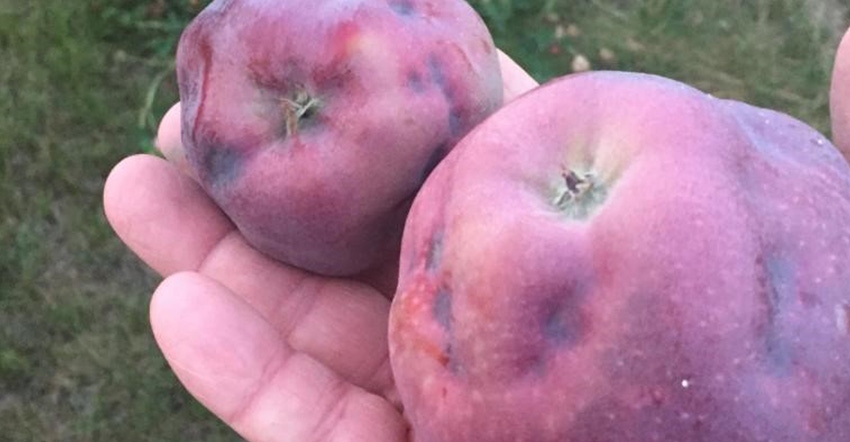September 12, 2018

By Julianna Wilson
We have learned a lot about the brown marmorated stinkbug since it was first detected in Pennsylvania in 1998.
We know, for instance, that BMSB first becomes a nuisance pest in homes when it seeks shelter in the fall for overwintering. We know it has a long list of plants it will feed on, including ornamental plants commonly found in Michigan landscapes.
We know it eventually became a serious economic pest in mid-Atlantic orchards, disrupting the current set of pest management practices known as IPM, and it has become the most important pest close to harvest in apple, pear, peach and nectarine orchards in that region. We have been waiting on pins and needles for it to arrive and wreak havoc in Michigan while doing our best to prepare for its arrival.
In mid- to late 2017, populations of BMSB increased to a level considered both a nuisance pest in homes throughout the state and a crop pest of concern in southern Michigan orchards. Michigan State University researchers and Extension have been undertaking several activities to try to get ahead of this invasive pest.
Monitoring population expansion
For the last five seasons, my lab has been responsible for coordinating efforts to track BMSB in fruit production areas in Michigan. We have been using traps baited with a combo lure meant to induce BMSB to aggregate and then be captured. With this data, we have been able to look at trends in population growth and expansion, and at the local level, provide grower cooperators data for their orchard block that could be used to trigger control measures.
What these efforts have shown is that every year the number of BMSB caught in traps continues to grow, particularly in southern Michigan. Through our efforts, there is much more awareness among tree fruit growers about this pest, more scouting is being done on farms and more control measures are being implemented where BMSB is detected.

WHERE THEY ARE: BMSB populations are at levels now considered a nuisance in homes and orchards in Michigan.

It is too early to say how bad the damage will be this season, but already we have seen and heard of damage from this pest in orchards where BMSB numbers have been high and expect to see more in apples coming out of controlled-atmosphere storage.
Attract-and-kill strategies
The problem with this pest is that both nymphs and adults feed on the fruiting structures of a wide variety of plants, especially woody plants, and their coloration allows them to be camouflaged against tree bark, making them hard to detect when scouting.
John Pote is a postdoctoral student working with a national team to develop IPM strategies for this pest. Pote has been working on possible attract-and-kill methods for managing the pest in orchards. One of those methods is the so-called “ghost trap” — insecticide-treated netting draped over a post and baited with the combo lure. He will be reporting on these results during one of the apple sessions at the upcoming Great Lakes EXPO in December.
Screening for parasitoids
Over last winter, we learned that a very tiny parasitoid wasp called the Samurai wasp, Trissolcus japonicus, that attacks and kills BMSB eggs and is native to the same part of the world as BMSB, was detected in nearby Ohio.
As part of the BMSB monitoring network in southern Michigan, we added yellow sticky cards to try to detect them here. At the time of this writing, we still have a number of cards to examine under the microscope, searching for possible suspects that are only 2 millimeters long. If we can confirm it is already here in Michigan, that will allow work to begin for actively rearing this wasp to try to increase biocontrol.
In the meantime, Dr. Marianna Szucs is working on screening for native parasitoids that may attack BMSB. She has been setting out BMSB egg masses in areas of high BMSB abundance to attract parasitism and then rearing out whatever has attacked the eggs back in the lab.
Her goal is to identify some of the main native parasitoids that have the potential to contribute to BSMB population suppression and to determine whether their efficiency for finding and killing BMSB eggs might be improved through selection in the lab.
More information on managing BMSB in Michigan orchards can be found online.
Wilson is a tree fruit integrator with MSU’s Department of Entomology. She can be reached at [email protected].
You May Also Like




